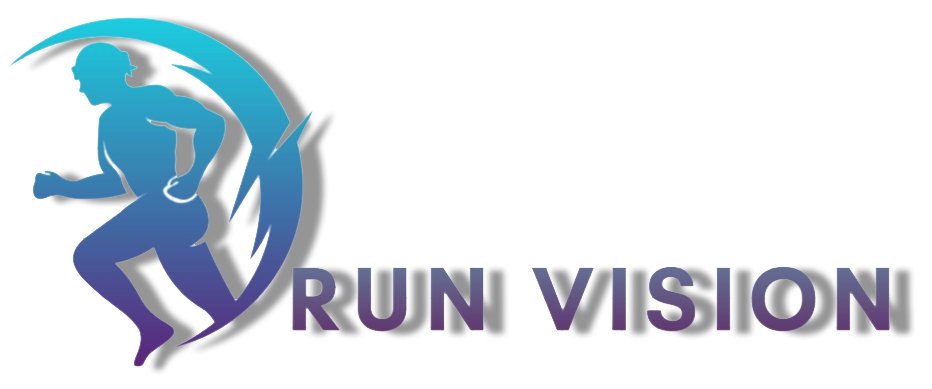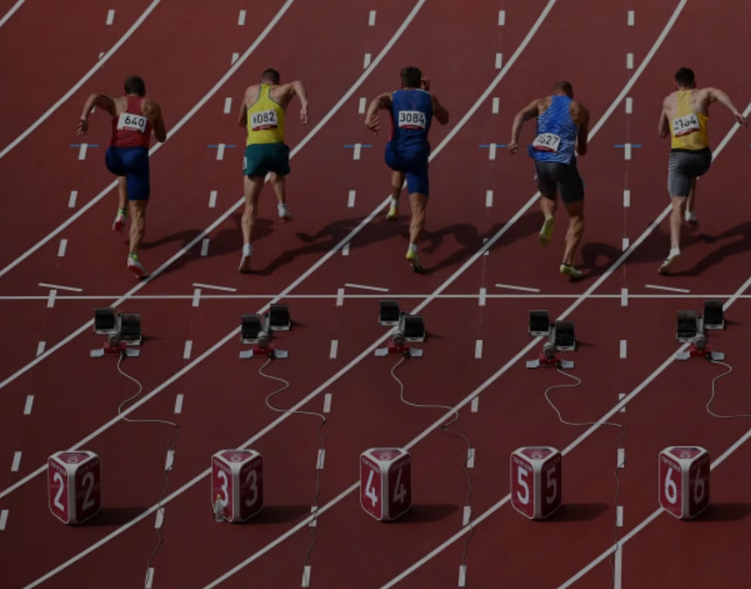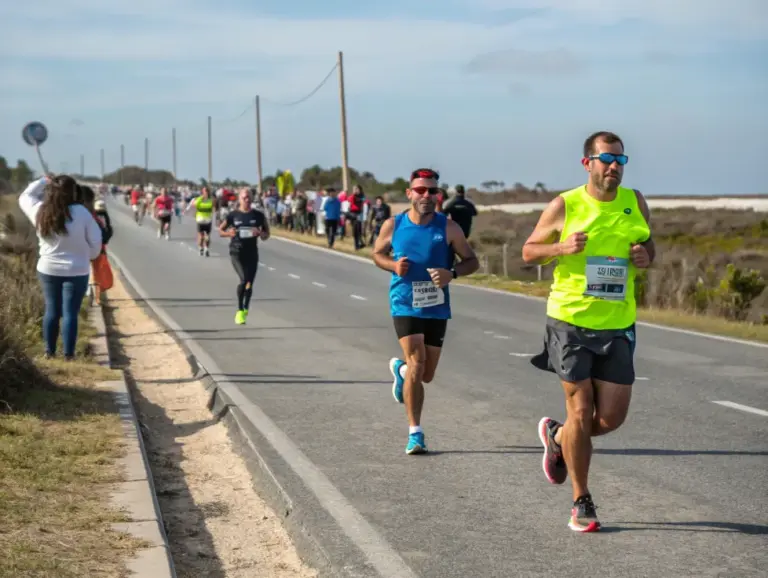Top 10 Flattest Marathons to Beat Your Personal Best
Looking to break your marathon record? Then you’re in the right place. Runners who train hard deserve a course that makes the most of their preparation—and flat marathons are perfect for that. Low elevation, smooth asphalt, minimal curves, and steady pacing opportunities make the following ten races ideal for clocking a new personal best. Ready to find your dream race?
Contents
- Deauville Marathon
- Dubai Marathon
- Milan Marathon
- Amsterdam Marathon
- Rotterdam Marathon
- Tokyo Marathon
- Valencia Marathon
- Chicago Marathon
- London Marathon
- Berlin Marathon (Overall Winner)
Other Flat Marathons in France
Deauville Marathon
We kick off this ranking in France with the Deauville Marathon, a relatively new event that has already gained a reputation for its extremely flat, two-loop layout. In 2022, it recorded the highest percentage of finishers under 3 hours across all French marathons—an impressive 17%. It was the French Championship that year, but those numbers still speak for themselves. This course avoids steep climbs, keeps the elevation low, and gives runners room to maintain rhythm from start to finish.

Dubai Marathon
The Dubai Marathon is legendary for one thing: pure flatness. Its course profile has virtually no elevation change, making it a paradise for competitive runners. As long as the temperature stays below extreme levels (which it often does in winter), the straight sea-side route allows athletes to lock in a sustainable pace and hold it over 42.195 km. Considering its fast, loop-based structure, Dubai is undeniably one of the best places to aim for a new PR.
Milan Marathon
With an officially recognized reputation as the fastest marathon route in Italy, the Milan Marathon attracts ambitious runners eager to combine speed with sightseeing. The course stays almost entirely level while weaving through classical architecture and urban scenery. But don’t let the beautiful surroundings push you into an early sprint—the real advantage here lies in steady pacing and smart energy use over a constant flat profile.
Amsterdam Marathon
Ranked seventh in this list, the Amsterdam Marathon balances a scenic course with a remarkably flat elevation profile. Participants enjoy passing key monuments—including a unique tunnel under the famous Rijksmuseum. Still, the Netherlands’ weather (especially wind) and several technical turns reduce its pure speed potential. These minor pace-disruptions make it slightly less efficient compared to its Dutch rival, Rotterdam.
Rotterdam Marathon
If Rotterdam had to answer a quiz about being fast, it would respond without hesitation: “Absolutely!” Less famous than Amsterdam but often quicker, this Dutch marathon has a nearly perfectly straight and flat layout. One iconic highlight is the crossing over the Erasmus Bridge—an energizing moment where runners feel like they’re sprinting across open water. Fewer turns and clean elevation lines make it ideal for pace consistency and confidence.
Tokyo Marathon
Tokyo Marathon earns its fifth-place position thanks to a brilliant structure that includes a gentle downhill stretch during the first five kilometres. This helps runners settle into a fast rhythm early. While the course has a few tight hairpin bends, the general flow remains exceptionally smooth. On top of that, it offers a rare opportunity to race through central Tokyo, passing historic districts and modern landmarks—a powerful combination of speed and immersion.
Valencia Marathon
Just outside the podium sits Spain’s Valencia Marathon—a course that keeps climbing the international rankings. Concrete data confirms its potential: in 2022, it hosted the fourth-fastest men’s global time and third-best women’s result. It combines flat streets with a famously vibrant atmosphere, which often pushes runners into their highest performance zones. If you want both speed and excitement, Valencia might be the ideal match.
Chicago Marathon
Our top three begins with Chicago. Known for generating records—including the women’s world record of 2:14:04 set by Brigid Kosgei in 2019—this course offers an uncomplicated elevation profile. Starting near Lake Michigan, it then takes athletes past iconic downtown streets and famous Chicago landmarks. The flatness helps maintain a comfortable cadence, and the visual immersion keeps morale high.
London Marathon
Taking second place is the London Marathon—an event that remains only 16 seconds behind the current men’s world record. It starts with a gentle downhill that allows runners to launch confidently into the flat sections that follow. The route’s structure, supported by world-class logistics, lets competitors build relentless momentum. Want real proof? Kelvin Kiptum’s 2:01:25 result in 2023 came incredibly close to rewriting marathon history.
Berlin Marathon – The World’s Fastest Course
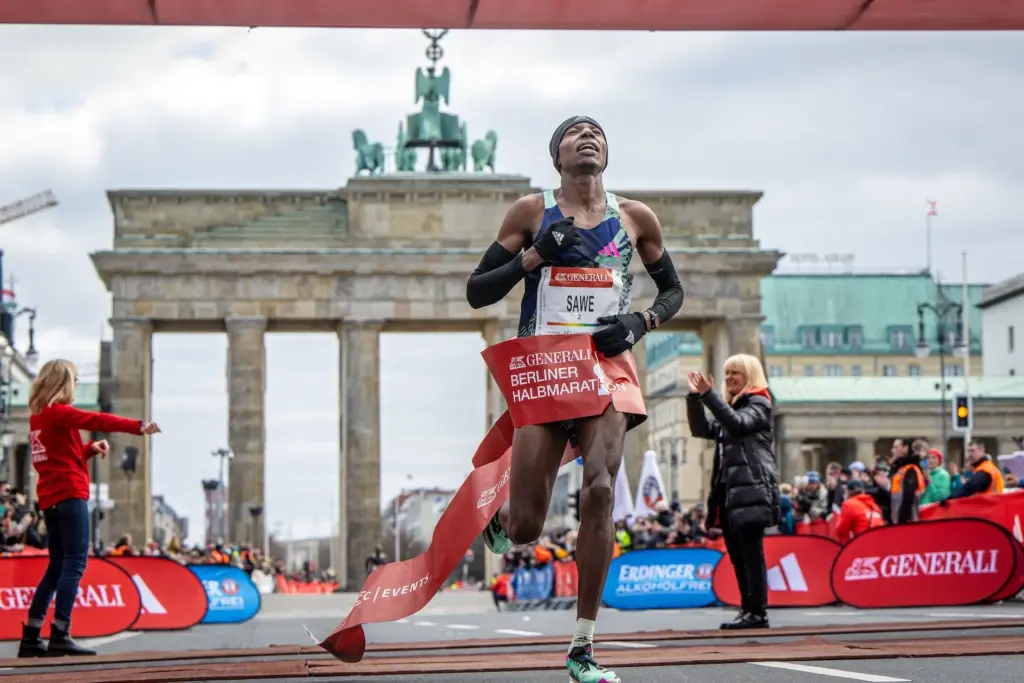
Berlin Marathon sits at the top of this ranking and for good reason. It’s the site of seven world records, including Eliud Kipchoge’s current 2:01:09. The course features barely 20 meters of total elevation, ultra-long straight sections, ideal weather (little wind, mild temperatures), and smooth road surfaces. There are almost no sharp turns, and runners get to experience Berlin’s historic landmarks without losing speed. It is widely regarded as the best marathon on Earth for setting personal records.
Other Flat Marathons in France
Although most of the top speed-focused marathons are abroad, France still offers several high-potential options. They may not carry the prestige of Berlin or London, but their flat profiles still make them excellent choices for time-focused runners.
Examples include:
- La Rochelle Marathon
- Nice-Cannes Marathon
- Bordeaux Marathon
Each of these events provides smooth, low-elevation routes with well-managed pacing possibilities and solid on-course support.
How to Choose the Right Flat Marathon
Don’t just select the fastest course. Each marathon offers different environmental conditions that directly affect performance. Here are key aspects worth evaluating before registering:
- Climate: Dubai has mild winter mornings but can become hot within hours. Berlin presents stable, cool temperatures ideal for endurance racing.
- Turns and Layout: Valencia and Rotterdam have long straights requiring fewer pace readjustments. Amsterdam includes more turns and narrow passages.
- Crowd Support: London and Chicago deliver huge, roaring crowds that provide psychological momentum. Deauville and La Rochelle feel more intimate but still well-organized.
- Accessibility: Getting a bib for Tokyo or London requires a lottery or qualification, while Milan and Valencia are more accessible to regular runners.
Training Strategies for Flat Courses
You might assume you don’t need to prepare differently for a flat marathon, but there are a few specific principles that will help maximize performance:
Focus on Steady Pace Training
Flat marathons reward consistency. Structure long runs to include segments at goal race pace to train your body for steady output without natural elevation breaks.
Practice Mental Endurance
Lack of variation can feel monotonous. Use mental cues, music, or divide the race mentally into five-mile sections to stay mentally active throughout the race.
Avoid Over-pacing Early
With gentle starts (London, Tokyo), it’s easy to go out too fast. Prepare a clear pacing plan and stick to it. A Garmin or Coros watch with auto-lap alerts can be extremely useful here.
Best Times to Race Each Course
| Marathon | Ideal Month | Average Temperature (°C) | Accessibility (Easy/Moderate/Hard) |
|---|---|---|---|
| Berlin | September | 14–18 | Hard |
| London | April | 10–15 | Hard |
| Chicago | October | 11–18 | Moderate |
| Valencia | December | 8–16 | Easy |
| Tokyo | March | 9–14 | Hard |
| Rotterdam | April | 10–15 | Easy |
| Amsterdam | October | 10–15 | Moderate |
| Milan | April | 12–18 | Moderate |
| Dubai | January | 14–20 | Easy |
| Deauville | November | 8–12 | Easy |
Note: Temperature ranges are based on race-day averages from the past five years.
Atmosphere and Experience
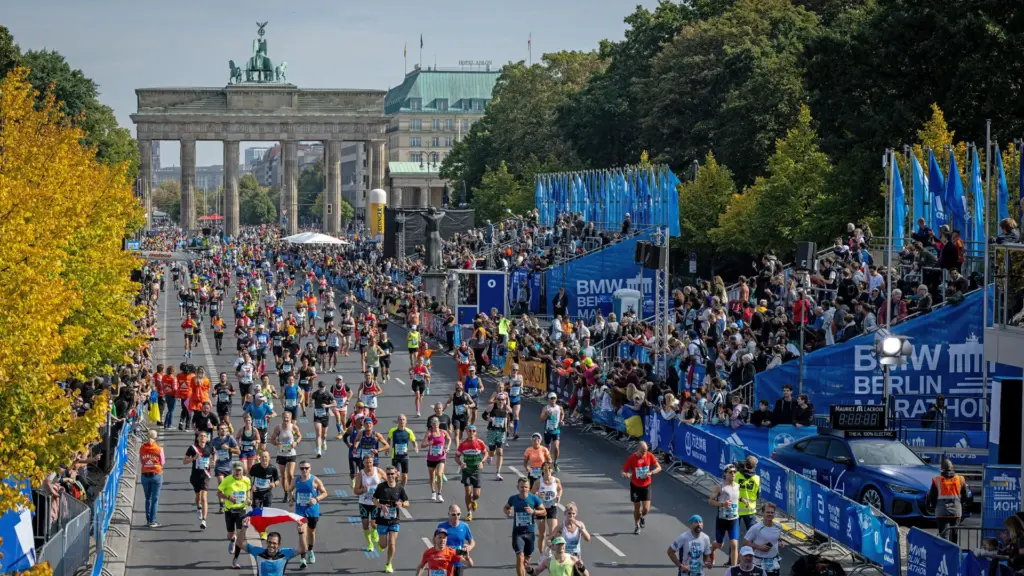
Berlin – Historic Elegance
Running past the Brandenburg Gate and through streets marked by history, the Berlin Marathon blends performance with cultural immersion. The atmosphere is international, and every kilometre is supported by high-energy spectators and music stations.
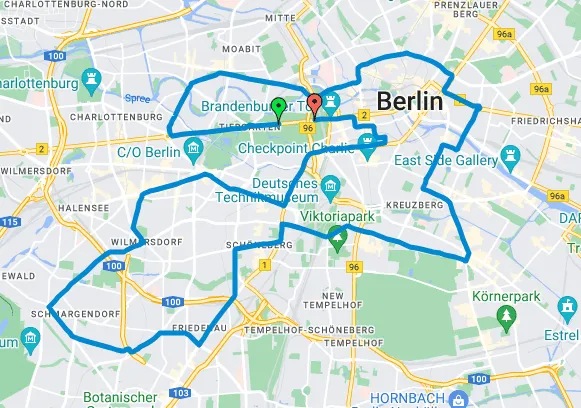
Valencia – Festival on Asphalt
This marathon feels like a street party. Runners often describe the Spanish crowds as infectious and uplifting. With flamenco groups and cheering zones, it’s easier to maintain a fast rhythm and positive mindset.
Chicago – Scenic Diversity
Lake Michigan’s shoreline offers visual relief early in the race, before transitioning into the urban energy of Chicago’s core. The route builds steadily in both atmosphere and pace — ideal for runners needing external stimuli to maintain focus.
Tips for Planning Your Flat Marathon Experience
- Register Early: Berlin and London sell out within hours. Plan at least nine months in advance.
- Book Accommodation Near the Start: Reduces stress and gives you more rest time on race morning.
- Fuel Strategically: Flat courses require constant energy flow — carry gels or chews and practice nutrition during long runs.
- Review Course Maps: Identify water stations, bridge passes, and any turns that could require technical preparation (e.g. Tokyo’s hairpins).
- Combine Travel with Recovery: If you’re flying in from another continent, arrive at least three days early to adjust.
Flat marathons might look “easy” on paper, but they reward discipline and consistent pacing more than any other course format. Whether you chase a personal best in Berlin, enjoy the art and architecture of Milan, or dive into the emotional energy of Valencia, you’ll find these routes offer the perfect setting for peak performance.
Choose wisely based on your personal racing style, prepare with consistency, and approach the start line with confidence — because with a flat course beneath your feet, the only thing left between you and a new record is mindset and heart.
